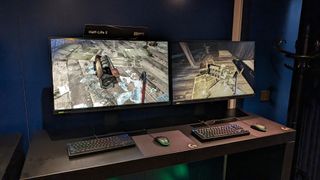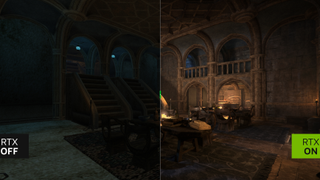[ad_1]
You may have heard Apple updated its top-of-the-line tablets at its Let Loose event on Tuesday. The 2024 model has some big improvements, including the new M4 chip, a “noticeably thinner and lighter” build, a superior OLED display and upgraded accessories. We broke down the key differences between the latest iPad Pro and its 2022 predecessor to help you figure out if it’s worth the (hefty) investment.
Display and dimensions
In Engadget’s hands-on at Apple’s “Let Loose” event, Deputy Editor Nathan Ingraham said the new iPad Pro’s thinner and lighter build and its Tandem OLED display are the first big changes you’ll notice when you pick up the latest model.
“In Apple’s extremely bright demo area, the iPad Pro screen showed its quality — everything was extremely clear, blacks were pitch-black and colors really popped,” he said after using it at Apple’s event. “After looking at the iPad Air display, it was obvious how much better these screens are.”
Another change you’ll notice when you compare the two iPad Pros side-by-side is camera positioning. The 2024 model moves its front-facing camera to the top-center when viewed in landscape orientation. The older model used Apple’s original iPad configuration, where the camera was centered above the screen when holding it upright in portrait mode.
The new iPad Pro is also noticeably lighter and thinner than its 2022 predecessor. The 13-inch model is a mere 5.11mm (0.2 inch) thick and weighs only 579g (1.28 lbs), making it 20 percent thinner and 15 percent lighter than the 12.9-incher from 2022. Meanwhile, the new 11-inch variant is 5.3mm (0.21 inch) thick and weighs 444g (0.98 lb), making it 10 percent thinner and five percent lighter than the older one.
Considering the 2022 model was already a svelte machine, it’s no wonder we found the new iPad Pro surprisingly thin and light relative to its processing power. Speaking of which…
Processor
The iPhone maker unveiled a new Apple Silicon version on an iPad instead of a Mac for the first time. The all-new M4 chip has up to a 10-core CPU configuration (four performance cores and six efficiency cores), which the company says translates to one and a half times faster performance than the M2 silicon in the 2022 model.
I say “up to” because, similar to MacBooks and some older iPad Pro models, Apple is shipping different chip variants depending on your pricing tier. The 1TB and 2TB versions of the 2024 model have that 10-core chip, while the 256GB and 512GB models drop down to a nine-core M4 with three performance and six efficiency cores.
The lower-tier and high-end M4 variants include a 10-core GPU with hardware-accelerated ray tracing, a 16-core neural engine, 120GB/s memory bandwidth and 16GB of RAM. So the different models don’t sound dramatically different — you just get an extra performance core in the more expensive tiers. We’ll have to wait until we get some extended time with them to see how that translates into real-world experience.
By comparison, the M2 in the 2022 iPad Pro has an eight-core CPU with four performance and four efficiency cores. It also has a 16-core Neural Engine (of course, an older version than the one in the M4), 100GB/s memory bandwidth and either 8GB or 16GB of RAM.
Accessories
The new iPad Pro also has some new accessories you can’t use with the 2022 model. That includes a new Magic Keyboard that Apple claims makes “the entire experience feel just like using a MacBook.”
You can thank its bigger trackpad with haptic feedback (like on modern MacBooks) and an aluminum palm rest. The older model used a microfiber-esque material and physically clicking trackpad, so the new one should feel more solid underneath your hands and aligned with MacBooks’ look and feel.
The new Magic Keyboard also adds a new 14-key function row (also similar to a MacBook) with shortcuts for things like brightness, Spotlight search, Siri / dictation and media controls.
Meanwhile, the Apple Pencil Pro — exclusively compatible with the 2024 iPad Pro and iPad Air — looks much like its predecessor but adds some extra goodies. Those include a new sensor in its barrel that lets you squeeze it like the lovely little stylus it is.
The new squeeze gesture can bring up tool palettes or activate shortcuts. Third-party developers can even customize the actions for individual apps. For the first time, it also adds haptic feedback to let you know if your squeeze was accepted or if something you moved has landed in its intended spot.
The new Apple Pencil also works with Find My (another first), so you can check on its most recent location in Apple’s location app if you lose it.
Both models also work with the cheaper ($79) USB-C Apple Pencil from 2023.
Price
Well, it can’t all be good news. With all those upgrades, Apple is once again asking you to consider paying more for a high-end tablet. The 11-inch iPad Pro starts at $999, and the 13-inch model starts at a whopping $1,299. Those are each $200 higher than the starting prices in the 2022 model (when it was available).
But wait, it gets worse. Those prices don’t take into account the $299 (11-inch) or $349 (13-inch) you’ll pay if you want to add the new Magic Keyboard, nor does it factor in the $129 for the Apple Pencil Pro. You’ll have to pony up to make the new iPad Pro as much like a MacBook as possible: It will cost you almost what you’d pay for an entry-level 14-inch MacBook Pro with the M3 chip.
On the slightly brighter side, you get more storage this time around. The 2024 iPad Pro starts with 256GB, double the 128GB in the 2022 model. Moving up from there, the other storage tiers are identical to its predecessor (ranging up to 2TB for those with Scrooge McDuck bank accounts).
Full specs comparison
Here’s a table showing the full specs comparison between the 2024 and 2022 iPad Pro models, including separate charts for the 13 / 12.9-inch and 11-inch variants.
13-inch iPad Pro (2024) vs. 12.9-inch iPad Pro (2022)
|
12.9-inch iPad Pro (2024) |
12.9-inch iPad Pro (2022) |
|
|
Price |
$1,299, $1,499, $1,899, $2,299 |
$1,099, $1,199, $1,399, $1,799, $2,199 |
|
Dimensions |
281.16 x 215.5 x 5.1 mm (11.09 x 8.48 x 0.20 inch) |
280.6 x 214.9 x 6.4 mm (11.04 x 8.46 x 0.25 inch) |
|
Weight |
1.28 pounds / 579 grams (Wi-Fi) 1.28 pounds / 582 grams (cellular) |
1.5 pounds / 682 grams (Wi-Fi) 1.51 pounds / 685 grams (cellular) |
|
Processor |
M4 |
M2 |
|
Display |
13-inch Ultra Retina XDR 2752 x 2064 (264 ppi) |
12.9-inch Liquid Retina XDR 2732 x 2048 (264 ppi) |
|
Storage |
256GB / 512GB / 1TB / 2TB |
128GB / 256GB / 512GB / 1TB / 2TB |
|
Battery |
38.99 Wh 10 hrs (Wi-Fi), 9 hrs (cellular) |
40.88 Wh 10 hrs (Wi-Fi), 9 hrs (cellular) |
|
Camera |
Back: 12MP, ƒ/1.8 Front: 12MP, ƒ/2.4 |
Back: 12MP wide, ƒ/1.8 / 10MP ultrawide, ƒ/2.4 Front: 12MP, ƒ/2.4 |
|
Compatible Apple accessories |
Magic Keyboard (2024) Apple Pencil Pro |
Magic Keyboard (2020) Apple Pencil (2nd generation) |
11-inch iPad Pro (2024) vs. 11-inch iPad Pro (2022)
|
11-inch iPad Pro (2024) |
11-inch iPad Pro (2022) |
|
|
Price |
$999, $1,199, $1,599, $1,999 |
$799, $899, $1,099, $1,499, $1,899 |
|
Dimensions |
249.7 x 177.5 x 5.9 mm (9.83 x 6.99 x 0.21 inch) |
247.6 x 178.5 x 5.9 mm (9.74 x 7.02 x 0.23 inch) |
|
Weight |
0.98 pound / 444 grams (Wi-Fi) 0.98 pound / 446 grams (cellular) |
1.03 pound / 466 grams (Wi-Fi) 1.04 pound / 470 grams (cellular) |
|
Processor |
M4 |
M2 |
|
Display |
11-inch Ultra Retina XDR Tandem OLED 2420 x 1668 (264 ppi) |
11-inch Liquid Retina LED 2388 x 1668 (264 ppi) |
|
Storage |
256GB / 512GB / 1TB / 2TB |
128GB / 256GB / 512GB / 1TB / 2TB |
|
Battery |
31.29 Wh 10 hrs (Wi-Fi), 9 hrs (cellular) |
28.65 Wh 10 hrs (Wi-Fi), 9 hrs (cellular) |
|
Camera |
Back: 12MP, ƒ/1.8 Front: 12MP, ƒ/2.4 |
Back: 12MP wide, ƒ/1.8 / 10MP ultrawide, ƒ/2.4 Front: 12MP, ƒ/2.4 |
|
Compatible Apple accessories |
Magic Keyboard (2024) Apple Pencil Pro |
Magic Keyboard (2020) Apple Pencil (2nd generation) |
Stay tuned for Engadget’s full review of the 2024 model. In the meantime, you can recap Nathan Ingraham’s initial impressions of the new iPad Pro and Apple Pencil Pro, Devindra Hardawar’s recap of the new model’s features and Sam Rutherford’s run-through of the new M4 chip.
Follow all of the news live from Apple’s ‘Let Loose’ event right here.
[ad_2]
Source Article Link













